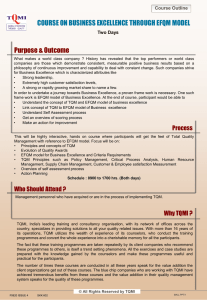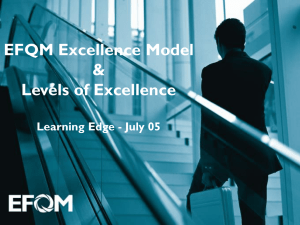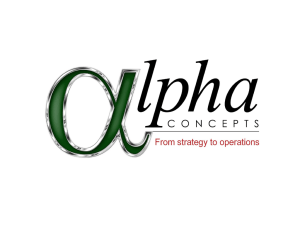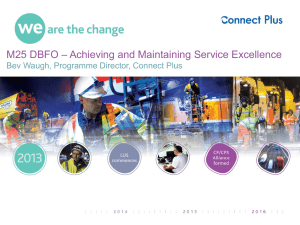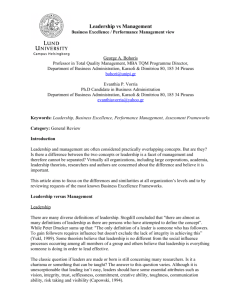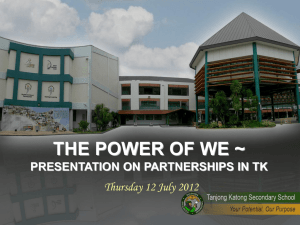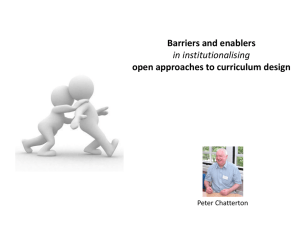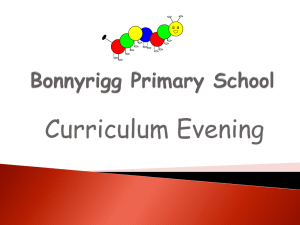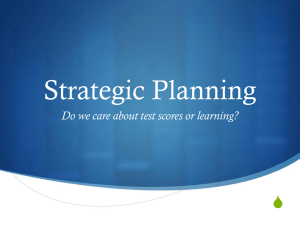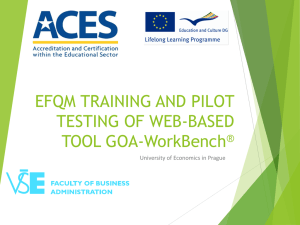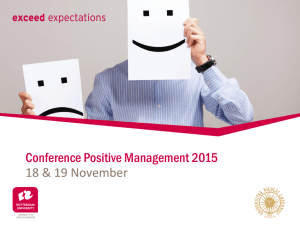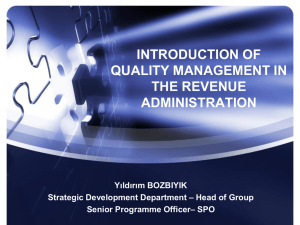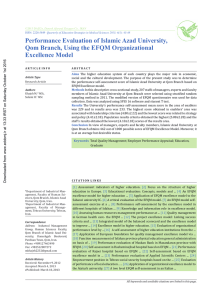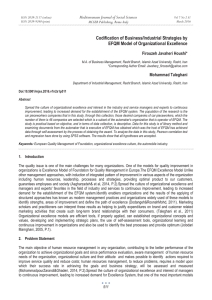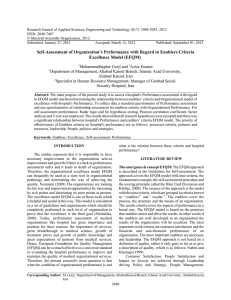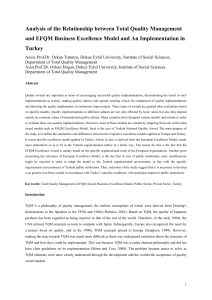People Results - The Derbyshire Network
advertisement
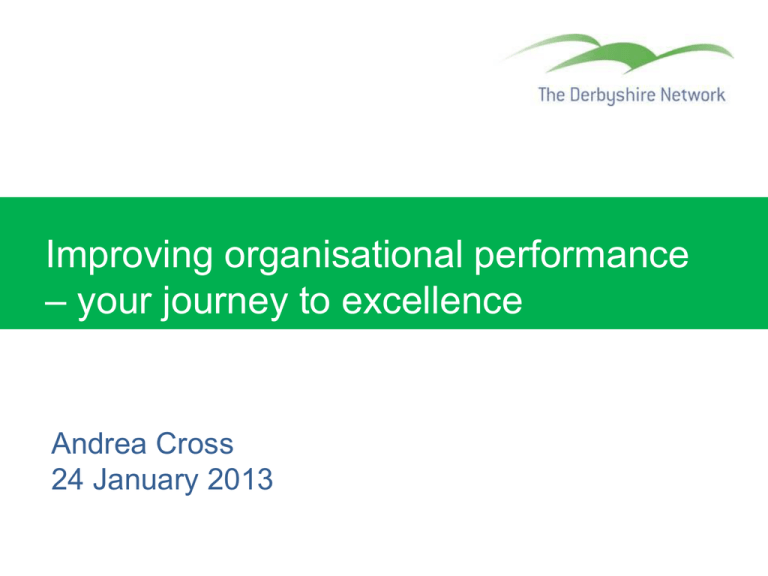
Improving organisational performance – your journey to excellence Andrea Cross 24 January 2013 Domestics Workshop objectives By the end of the event you will be able to: • Describe the 9 areas of the EFQM Excellence Model • Understand how the Model can be used • See how other standards link to the Model • Explain “RADAR” • Carry out a simple assessment against the Model Exercise • What makes an excellent organisation? Output Individually consider the above question and write words/phrases to describe your thoughts on individual post-its Minimum 5 post-its per person Time 5 minutes Task What is excellence…… Harnessing creativity and innovation Visionary and inspirational leadership Adding value for customers Succeeding through the talent of people Creating a sustainable future Value adding partnerships Intimate understanding of customers Managing by processes and facts EFQM Excellence Model People Strategy Partnerships & Resources Results Processes, Products & Services Enablers People Results Customer Results Society Results Learning, Creativity & Innovation People Strategy Partnerships & Resources Processes, Products & Services EFQM Excellence Model People Results Customer Results Society Results Enablers…criterion parts 1. Leadership 2. Strategy 3. People 4. Partnerships & Resources 5. Processes 1a. 2a. 3a. 4a. 5a. 1b. 2b. 3b. 4b. 5b. 1c. 2c. 3c. 4c. 5c. 1d. 2d. 3d. 4d. 5d. 3e. 4e. 5e. 1e. People…criterion parts 3a. How people resources are planned, managed & improved 3b. How people’s knowledge & competencies are identified, developed & sustained 3c. How people are involved & empowered 3d. How people communicate effectively throughout the organisation 3e. How people are rewarded, recognised & cared for Criterion part 3d …this may include • Identifying communication needs • Developing communications policies, strategies & plans based on needs • Developing & using top down, bottom up & horizontal channels • Sharing best practice & knowledge HOW? Balanced set of measures • Customer Results – Perception Measures – Performance Indicators • People Results – Perception Measures – Performance Indicators • Society Results – Perception Measures – Performance Indicators • Business Results – Business Outcomes – Business Performance Indicators Exercise • What results should an “excellent” organisation measure ? Task In groups, discuss for the “result” area given, what you do (or could) measure. Also consider what factors you take into account when measuring the actual results Output Scribe example measures on a flipchart Time 15 mins Results Establishes a set of robust and resilient measures Shows what the organisation achieves in relation to planned performance Realistic targets are established Benchmarks are used to drive improvement Leaders use information to improve organisation performance IIP – contribution towards excellence Strategy 30% 35% Partnerships & Resources Enablers People Results 60% Processes etc People Customer Results 50% 15% Society Results 25% 15% Results ISO 9000 – contribution towards excellence Strategy 10% 10 % 10 % Partnership & 20% Resources Enablers People Results Processes etc People 40% Customer Results Society Results Results 25% Model uses • For judging “Excellence Awards” • Organisational continuous improvement tool – internal use • Organisational continuous improvement tool – external validation • As a standard- Investors in Excellence Weighting within the model 1 50% People Results 3 5 10% Strategy 2 10% 10% Partnerships & Resources 4 10% Processes, Products & Services Enablers 10% People Results 50% 7 9 10% Customer Results 6 15% Society Results 8 10% Learning, Creativity & Innovation 15% RADAR logic... Determine Results required Assess and Refine approaches and their deployment Plan and develop Approaches Deploy Approaches What you do Drive Pro-active working Doing the right things badly Doing the right things well Doing the wrong Doing the wrong things badly things well How you do it Scoring expectations Typical scoring ranges…… • • • • • 350 – 400 – Investors in Excellence standard 375 – 450 – Regional Finalist (Midlands Excellence Awards) 450 – 550 – Regional Winner 550 – 650 – National Winner 650 – 750 – European Winner • These are illustrative only as becoming a finalist or winner will depend on the competition! EFQM - Does it work ? 5 year European study revealed companies using Excellence Model out performed their industry median by: 79% profit per employee 76% greater return on assets 76% higher profit margin Where are you now? Workshop objectives – did we meet them? By the end of the event you will be able to: • Describe the 9 areas of the EFQM Excellence Model • Understand how the Model can be used • See how other standards link to the Model • Explain “RADAR” • Carry out a simple assessment against the Model Diary dates • 6 February – Sub- contractor mandatory event • 26 February – Safeguarding for Designated Person LSIS Event • 28 February 24+ Learner Loan • 8 March Effective Health & Safety • 19 March Networking & Communications Event • 25& 26 March Consultative Selling LSIS Event Useful websites • www.investorsinexcellence.com • www.bqf.org.uk • www.efqm.org

